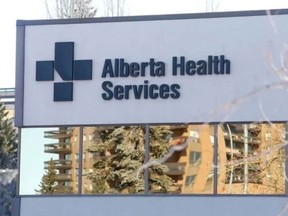The Smith government has not shied away from reform. It’s reorganized one of province’s largest employers (Alberta Health Services) with the goal of improving health-care delivery.

Article content
It’s unusual to see a provincial government take on health-care reform. But not so in Alberta, where major reforms have been underway for almost a year. The province has long struggled with lengthy waits for non-emergency care and a majority (58%) of Albertans last year were unsatisfied with the government’s handling of health care.
Advertisement 2
Article content
Article content
Recommended Videos
Article content
And who could blame them?
The median wait last year in Alberta was 19.2 weeks to see a specialist (after getting a referral from a family doctor) followed by the same amount of time to receive treatment. This combined 38.4-week wait marked the longest delay for non-emergency care in Alberta since data were first published more than 30 years ago. Also last year, an estimated 208,000 patients waited for care in Alberta. These waits are not benign and can result in prolonged pain and discomfort, psychological distress, and can impact our ability to work and earn money.
Costly delays
In fact, according to our new study, last year health-care wait times in Alberta cost patients $778 million — or more than $3,700 per-patient waiting. This estimate, however, doesn’t include leisure time after work or on weekends. When this time was included in the calculation, the total cost of these waits balloons to more than $2.3 billion or around $11,000 per patient.
Article content
Advertisement 3
Article content
Again, to its credit, the Smith government has not shied away from reform. It’s reorganized one of province’s largest employers (Alberta Health Services) with the goal of improving health-care delivery, it plans to change how hospitals are funded to deliver more care, and it continues to contract out publicly funded surgeries to private clinics. Here, the government should look at expanding, based on the success the Saskatchewan Surgical Initiative (SSI), which helped increase that province’s surgical capacity by delivering publicly funded surgeries through private clinics and shortened the median health-care wait from 26.5 weeks in 2010 to 14.2 weeks by 2014.

The SSI also “pooled” referrals in Saskatchewan together and allowed patients to choose which specialist they wanted to see for treatment, and patients received estimates of how long they would wait before choosing.
Advertisement 4
Article content
In Alberta, however, family doctors still refer patients to one specific specialist at a time yet remain potentially unaware of other appropriate doctors with shorter waits. But if Alberta also put specialist wait lists and referrals into one list, and provided updated wait times information, a family doctor could help patients choose a specialist with a shorter wait time. Or better yet, if Albertans could access that information online with an Alberta health card, they could make that decision on their own while working with their family doctor.
Make no mistake, change is in the air for health care in Alberta. And while key policy changes are now underway, the Smith government should consider more options while this window for reform remains open.
Mackenzie Moir is a senior analyst at the Fraser Institute.
Article content


